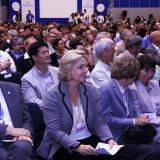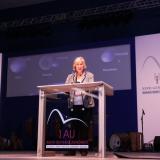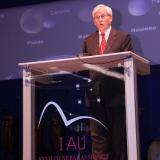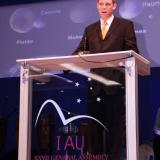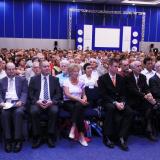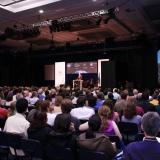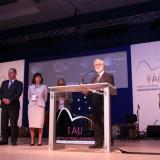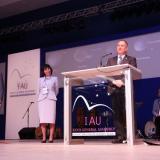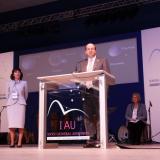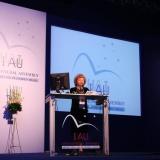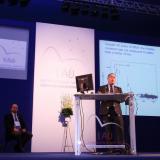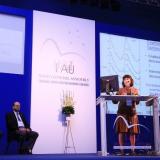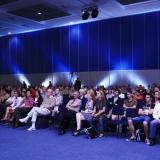2009 Gruber Cosmology Prize
Astronomers Wendy Freedman, Robert Kennicutt, and Jeremy Mould led the Hubble Space Telescope Key Project on the Extragalactic Distance Scale, a painstaking ten-year-long effort that resolved the decades-long dispute about the value of the Hubble constant, one of the most important measurements in astronomy. The project’s findings have not only effectively determined the age of the universe (about 14 billion years), but have also enabled scientists to more accurately investigate other profound questions about the birth, evolution, and composition of the universe.
2009 Cosmology Prize Recipients
Laureate Profile
Wendy Freedman, Robert Kennicutt, and Jeremy Mould led the Hubble Space Telescope Key Project on the Extragalactic Distance Scale, a team of 28 astronomers at 13 different international institutions, in resolving a decades-long dispute about the value of the Hubble constant, one of the most important measurements in astronomy. After a painstaking decade-long effort, the team determined that the best value of the Hubble constant was 72 ± 8 kilometers per second per megaparsec (km/s/Mpc). This value, which has an error rate of only 10 percent, is enabling scientists to more accurately answer some of the most profound questions about the age, evolution, and composition of the universe. For example, astronomers can now confidently state that the universe is approximately 14 billion years old—the same age as the oldest stars.
Leadership of the Hubble Space Telescope Key Project (one of three major projects of the Hubble Space Telescope when it was launched in 1990) required meticulous planning and execution. To determine a precise value for the Hubble constant, the team led by Freedman, Kennicutt, and Mould focused on Cepheids, a type of star whose light pulses with a regularity that can be reliably used to measure intergalactic distances. All data collected on these stars from the Hubble Space Telescope and associated ground-based observations underwent detailed analysis, and related computer software had to be rigorously checked and tested at every step along the way. It was a slow, painstaking, but ultimately triumphant effort. In addition to resolving the question of the value of the Hubble constant, the methods devised by the team to measure galaxy distances have forever changed the way precision cosmology is approached.
Since the completion of the Hubble Space Telescope Key Project in 2001, Freedman, Kennicutt, and Mould have continued to observe and study the farthest reaches of the cosmos to determine the birth and life cycle of stars, galaxies—and the universe itself. Freedman, director of the Observatories of the Carnegie Institution of Washington in Pasadena, California, has been studying the behavior of supernovae to better determine the nature of the mysterious cosmic phenomenon known as dark energy, which appears to play an essential role in the rate at which the universe is expanding. She is currently leading a team of scientists that is using NASA’s space-based Spitzer telescope to decrease the uncertainly in the Hubble constant from 10 percent to 3 percent. Kennicutt, Director and Plumian Professor of Astronomy and Experimental Philosophy at the University of Cambridge’s Institute of Astronomy in England, is currently leading the Spitzer Infrared Nearby Galaxies Survey (SINGS) project, which is undertaking an in-depth survey of 75 nearby star-forming galaxies. Mould, honorary professorial fellow at the University of Melbourne, has recently co-authored a series of papers showing that when red giants (large, luminous stars in a late phase of their life-cycle) are used as standard candles (astronomical objects with a known luminosity), the value of the Hubble constant is the same as when Cepheid stars are used. This research confirms the findings of the Hubble Space Telescope Key Project.
Watch Video
Citation
The Peter and Patricia Gruber Foundation proudly presents the 2009 Cosmology Prize to Wendy Freedman, Robert Kennicutt and Jeremy Mould for the definitive measurement of the rate of expansion of the universe, Hubble's Constant. This parameter effectively determines the age of the universe at the current time and underpins every other basic cosmological measurement.
An accurate measurement of the expansion rate was one of three major goals of the Hubble Space Telescope when it was launched in 1990. From meticulous measurements of a particular kind of variable star, the Cepheids, Freedman, Kennicutt and Mould met this goal, resolving one of the longest-standing debates in the history of modern cosmology.





